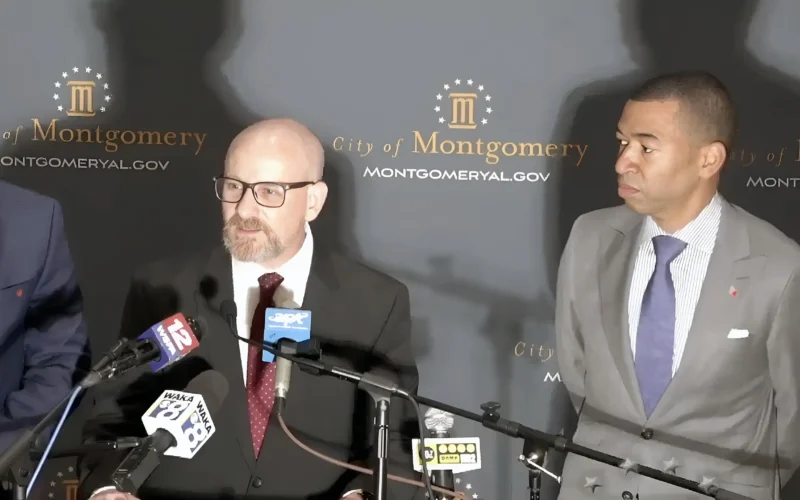MONTGOMERY, AL – Following a violent weekend in Montgomery, Alabama, Mayor Steven L. Reed and the Montgomery Police Department (MPD) unveiled a new community safety initiative aimed at reducing crime while fostering trust between law enforcement and residents. The plan includes increased policing, community outreach, and technology-based strategies, but in a city with a majority-Black population, some question whether these measures will bring safety or unintended harm.
The New Safety Plan: What’s Being Proposed?
The city’s strategy focuses on a dual approach: enforcement and prevention. Key elements include:
- Increased Police Patrols – More officers will be deployed in high-crime areas to deter violence.
- Community Engagement Programs – Partnerships with local organizations to address root causes of crime, such as poverty and lack of opportunity.
- Surveillance Technology – Potential expansion of tools like ShotSpotter (gunfire detection systems) and cameras in public spaces.
- Youth Outreach & Curfews – Expanded mentorship programs and possible curfew enforcement for minors.
- Transparency Measures – Police pledge to improve communication with residents about crime trends and arrests.
Mayor Reed emphasized that the plan is designed to be “both proactive and compassionate,” stating, “We cannot arrest our way out of violence, we must invest in our people while ensuring neighborhoods are safe.”
Potential Benefits: A Chance for Change
If implemented responsibly, this plan could:
✔ Reduce Immediate Violence – More patrols may deter shootings and robberies in hotspots.
✔ Strengthen Community Trust – Outreach programs could build bridges between police and residents.
✔ Provide Alternatives for Youth – Mentorship and job training could steer young people away from crime.
The Risks: Could History Repeat Itself?
While the intentions may be good, Black communities have reason to be cautious. In the 1990s, many Black leaders and residents supported tough-on-crime policies, including the 1994 Crime Bill, hoping to rid neighborhoods of drugs and violence. Instead, those policies led to:
- Mass incarceration (especially of Black men)
- Over-policing of Black neighborhoods
- Broken trust between police and communities
Today, Montgomery’s new plan risks similar pitfalls if not carefully monitored:
❌ Over-Policing & Harassment – More officers in Black neighborhoods could lead to unnecessary stops, arrests, or use of force if bias exists.
❌ Surveillance Abuse – Technology like facial recognition or ShotSpotter has been wrongly targeted at Black communities in other cities.
❌ Curfews Criminalizing Youth – Strict enforcement could disproportionately punish Black teens instead of helping them.
A Call for Accountability & Balance
Community advocates stress that good intentions are not enough—the plan must include:
🔹 Independent oversight of police conduct
🔹 Clear data tracking to ensure fair enforcement
🔹 Investment in jobs & education, not just policing
Conclusion: A Path Forward
Montgomery’s new safety plan could work if done right. The city must balance strong enforcement with real community investment, ensuring history doesn’t repeat itself. Residents deserve both safety and justice, not one at the expense of the other.
What do you think? Should Montgomery move forward with this plan? Share your thoughts with us in the comments.






